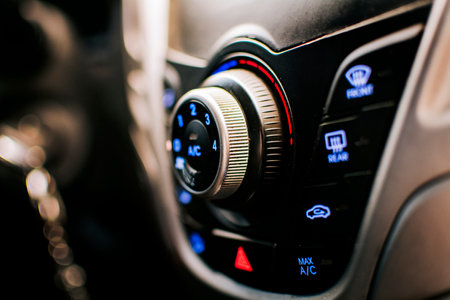1. Understanding Fuel Octane Ratings
If you’re interested in getting the most out of your car on the dyno, one of the first things you’ll hear about is fuel octane. But what exactly does octane mean, and why is it such a big deal for performance tuning?
What Are Octane Ratings?
Octane rating is a measure of a gasoline’s ability to resist “knocking” or “pinging” during combustion. Knocking happens when fuel burns unevenly in your engine’s cylinders, which can cause damage and reduce power. The higher the octane number, the more resistant the fuel is to knocking.
How Are Octane Ratings Measured in the US?
In the United States, gas stations display octane ratings using the Anti-Knock Index (AKI), which averages two different laboratory test results: Research Octane Number (RON) and Motor Octane Number (MON). You’ll see this on gas pumps as:
Octane Rating = (R + M) / 2
| Fuel Type | Common AKI Rating | Label at Pump |
|---|---|---|
| Regular Unleaded | 87 | Regular |
| Mid-Grade Unleaded | 89 | Plus or Midgrade |
| Premium Unleaded | 91–93 | Premium |
| Race Fuel | 100+ | Specialty Use |
Why Does Octane Matter for Performance Vehicles?
If your vehicle has a high-performance engine—especially one that’s turbocharged, supercharged, or tuned for higher compression—it needs fuel that won’t ignite prematurely under pressure. Using a lower-octane fuel than recommended can limit your dyno results, cause knocking, and even harm your engine over time.
Main Takeaways:
- The higher the octane, the greater resistance to knock.
- The U.S. uses AKI (R+M/2) for pump labels.
- Performance engines often require premium or even race-grade fuels to safely reach their full potential on the dyno.
Understanding these basics sets you up for smarter tuning choices and helps protect your investment in performance parts.
2. Why Octane Matters During Dyno Tuning
When it comes to dyno tuning, choosing the right fuel octane is more than just filling up with premium gas and hoping for the best. Octane rating plays a crucial role in how your engine performs on the dyno, whether you’re working with a stock daily driver or a highly modified project car. Here’s what you need to know about why octane matters during dyno tuning sessions.
The Science Behind Octane Ratings
Octane rating measures a fuel’s ability to resist “knocking” or pre-ignition. Knocking happens when fuel combusts too early in the engine cylinder, which can cause serious engine damage over time. High-performance engines and those with higher compression ratios are especially sensitive to knocking, making octane selection even more important.
How Octane Impacts Tuning Results
If you use fuel with an octane rating that’s too low for your setup, the tuner may have to dial back timing and reduce power output just to keep things safe. On the other hand, using the right octane allows tuners to maximize horsepower and torque without risking engine health. This is why accurate dyno results depend heavily on using the correct octane fuel during your session.
Stock vs. Modified Engines: What’s Different?
| Engine Type | Recommended Octane | Reason |
|---|---|---|
| Stock Engines | Manufacturer Spec (usually 87-91) | Engine designed for lower compression; less risk of knock. |
| Mildly Modified | 89-93+ | Slightly higher compression or boost; needs better knock resistance. |
| Heavily Modified/Boosted | 93+ or Race Fuel/E85 | Much higher compression or boost; highest risk of knock and engine damage. |
The Bottom Line: Why Octane Selection Is Critical
Tuning with the correct octane ensures you get reliable data from the dyno and keeps your engine safe from potential damage. Always match your fuel choice to your engine’s needs—this simple step can make all the difference between a successful tune and costly repairs down the line.

3. Effects of Low vs High Octane on Engine Performance
When it comes to dyno tuning, the octane rating of your fuel plays a critical role in how your engine performs. Understanding the effects of using low versus high octane fuel can help you make better decisions for both power and engine longevity. Let’s break down what happens inside your engine and what you’ll see on the dyno.
Combustion Differences
Octane rating measures a fuel’s ability to resist “knocking” or pre-detonation during combustion. Knocking is when the air-fuel mixture ignites too early, which can damage your engine over time. High octane fuels can handle more pressure before igniting, making them ideal for high-performance engines that run higher compression ratios or forced induction like turbochargers.
| Octane Level | Resistance to Knocking | Best For |
|---|---|---|
| Low Octane (87-89) | Lower | Stock engines, low compression |
| High Octane (91-100+) | Higher | Tuned engines, high compression/turbocharged |
Impact on Engine Health
If you run low octane fuel in an engine tuned for high performance, you risk knocking, which can lead to piston damage, overheating, and even total engine failure. High octane fuel helps prevent this by burning more steadily under higher pressure, keeping your internals safer—especially during aggressive dyno pulls.
How It Affects Dyno Numbers
On the dyno, the right octane level can mean the difference between hitting your target horsepower and falling short. Engines tuned with higher ignition timing or boost will require higher octane to safely achieve those gains. Using lower octane in these setups often forces tuners to dial back timing or boost to avoid knock, which means less power at the wheels.
| Fuel Octane Used | Timing/Boost Allowed | Dyno Power Output |
|---|---|---|
| Low Octane | Reduced (to prevent knock) | Lower HP/TQ numbers |
| High Octane | Optimized (more aggressive settings possible) | Higher HP/TQ numbers |
Takeaway for Tuners and Drivers
If you want to unlock the full potential of your build on the dyno, always match your fuel’s octane rating to your engine’s needs and your tuner’s recommendations. This not only maximizes performance but also keeps your engine safe under stress.
4. Choosing the Right Octane for Your Build
Selecting the right fuel octane is one of the most important steps when dyno tuning your car. The correct octane can make or break your engine’s performance and reliability, especially if you’ve upgraded parts or increased power with forced induction. Here’s how to pick the best octane for your setup:
Understand What Octane Ratings Mean
In the U.S., gas stations label fuel with numbers like 87, 89, or 93. This number is the octane rating, which tells you how resistant the fuel is to knocking (engine detonation). Higher numbers mean better resistance—great for high-performance engines.
Check Your Engine’s Compression Ratio
The compression ratio is a big deal when it comes to choosing fuel. Engines with higher compression need higher octane to avoid knocking. Here’s a quick guide:
| Compression Ratio | Recommended Octane |
|---|---|
| Up to 9:1 | 87-89 (Regular/Midgrade) |
| 9:1 to 10.5:1 | 89-91 (Midgrade/Premium) |
| 10.5:1 and above | 91-93+ (Premium/Race Fuel) |
If You’re Running Boost
Turbos and superchargers increase cylinder pressure, so even a moderate boost level can require higher-octane fuel. As a rule of thumb:
- Low boost (under 8 psi): 91+ octane is usually safe.
- High boost (over 8 psi): Consider 93+ or even race fuel for aggressive setups.
Your Intended Use Matters
- Daily Driving: Stay close to what your owner’s manual recommends. No need for race gas if you’re just cruising.
- Track/Performance Use: Go for higher octane to maximize power and keep things safe at high RPMs and loads.
Quick Tips for Selecting Octane
- If in doubt, ask your tuner—they know your setup best.
- Avoid “octane boosters” from auto parts stores; they rarely deliver as promised.
- If you hear pinging or knocking under load, step up to a higher octane immediately.
Summary Table: Matching Octane to Your Setup
| Engine Type/Setup | Octane Needed |
|---|---|
| Stock, low compression, no boost | 87-89 |
| Mild build, moderate compression, light boost | 89-91 |
| Aggressive build, high compression or heavy boost | 91-93+ |
5. Potential Risks of Using Incorrect Octane
Understanding What Happens When You Use the Wrong Octane
When it comes to dyno tuning, choosing the right fuel octane is not just about making more power—its also about protecting your engine. Using an octane rating thats too low for your setup can cause a range of problems, from annoying knocking sounds to severe long-term damage.
Common Issues Caused by Low-Octane Fuel
| Issue | Description | Impact on Dyno Results & Engine Health |
|---|---|---|
| Knocking (Detonation) | A rattling or pinging sound that happens when fuel ignites too early in the combustion cycle. | Lowers horsepower and torque; can seriously damage pistons, valves, and cylinder walls. |
| Pre-Ignition | Fuel-air mixture ignites before the spark plug fires, often caused by hot spots inside the cylinder. | Can lead to melted pistons and catastrophic engine failure if not addressed quickly. |
| Poor Dyno Performance | The engine cant reach its full potential because the ECU (engine computer) pulls timing to prevent knock. | Lower numbers on the dyno sheet; makes tuning less effective and can hide real issues. |
| Long-Term Reliability Issues | Repeated exposure to knock and pre-ignition stresses internal parts over time. | Shortened engine lifespan, more frequent repairs, and higher maintenance costs. |
Why Octane Matters for Your Tuning Session
If youre investing in a dyno tune, using the correct octane is crucial. The tuner sets your cars ignition timing and boost levels based on the fuel you provide. If you use a lower-octane fuel than what was used during tuning, you risk immediate performance loss and possible engine damage. On the flip side, higher octane allows for more aggressive tuning but only makes sense if your setup requires it.
Real-World Example: What Can Go Wrong?
Imagine getting your car tuned on 93-octane pump gas in the U.S., then later filling up with 87-octane because its cheaper. Your engine management system might pull timing to protect itself, but if it cant react fast enough, you could hear knocking or even experience a check engine light. Over time, this can lead to expensive repairs that outweigh any short-term savings at the pump.
6. Real-World Insights from American Tuners
What US Tuners Say About Fuel Octane and Dyno Tuning
In the world of dyno tuning, many American tuners stress that fuel octane is more than just a number at the pump—it’s a crucial factor in unlocking your engine’s real potential. When it comes to tuning for performance and reliability, here’s what seasoned US-based professionals recommend:
Why Octane Matters on the Dyno
American tuners consistently point out that higher octane fuels allow for more aggressive timing and boost without risking engine knock. This means you can safely push your car harder on the dyno to extract maximum horsepower and torque, especially with forced induction or high-compression builds.
Best Practices Shared by US Tuners
| Practice | Tuner Recommendation |
|---|---|
| Choose the Right Octane | Use the highest octane fuel recommended for your build—don’t skimp if you want reliable power gains. |
| Test Consistently | Always dyno tune with the same octane level you’ll use daily. Switching fuels after tuning can risk engine damage. |
| Monitor Knock | Invest in quality knock sensors or monitoring equipment during dyno sessions to protect your motor. |
| Avoid Race Gas Unless Needed | If your car isn’t built for race gas, stick with premium pump gas (usually 91 or 93 octane in most US states). |
| Consider Ethanol Blends Carefully | E85 offers great power potential but requires dedicated tuning and fuel system upgrades—consult an experienced tuner first. |
Common Advice: Protect Your Investment
American tuners often remind enthusiasts that saving a few bucks by using lower octane fuel can lead to expensive repairs down the road. They emphasize that the right fuel is an investment in both performance and engine longevity. Always listen to your tuner’s advice—they know how to balance power gains with long-term reliability based on real-world experience.


